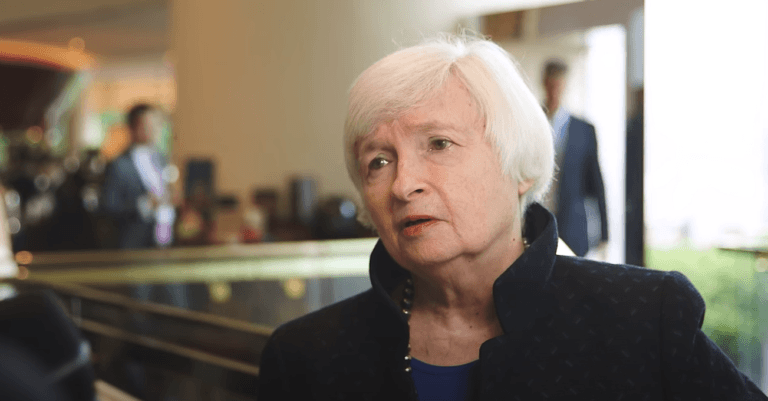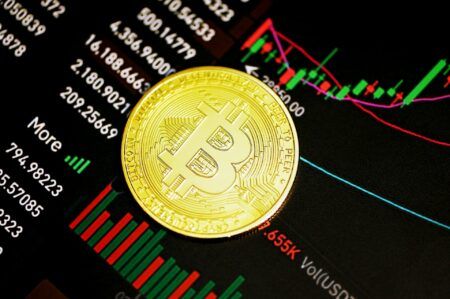On Thursday (April 7), U.S. Treasury Secretary Dr. Janet Yellen gave a speech on “digital assets policy, innovation, and regulation” at American University’s Kogod School of Business Center for Innovation.
Below are some key highlights from Yellen’s speech (based on the press release issued by the U.S. Department of the Treasury).
Yellen started by reminding the attendees about the Executive Order (signed a few weeks) by President Biden calling for “a coordinated and comprehensive government approach to digital asset policy.”
She said:
“President Biden’s Executive Order tasked experts across the federal government with conducting in-depth analysis to balance the responsible development of digital assets with the risks they present.
“These tasks will be guided by six policy objectives: first, protect consumers, investors, and businesses; second, safeguard financial stability from systemic risk; third, mitigate national security risks; fourth, promote US leadership and economic competitiveness; fifth, promote equitable access to safe and affordable financial services; and, finally, support responsible technological advances, which take account of important design considerations like those related to privacy, human rights, and climate change.
“Over approximately the next six months, Treasury will work with colleagues in the White House and other agencies to produce foundational reports and recommendations related to these objectives. In many cases, the work tasked by the Executive Order builds upon ongoing efforts at Treasury.“
She then shared “five lessons that apply” as the U.S. government examines “the opportunities and challenges posed by these emerging technologies.”
Lesson 1: “Our financial system benefits from responsible innovation”
“Under the Executive Order, the Administration will publish a report on the future of money and payments. The report will analyze possible design choices related to a potential CBDC and implications for payment systems, economic growth, financial stability, financial inclusion, and national security.
“Innovation that improves our lives while appropriately managing risks should be embraced. But we must also be mindful that ‘financial innovation’ of the past has too often not benefited working families, and has sometimes exacerbated inequality, given rise to illicit finance risks, and increased systemic financial risk.“
Lesson 2: “When regulation fails to keep pace with innovation, vulnerable people often suffer the greatest harm”
“Our regulatory frameworks should be designed to support responsible innovation while managing risks – especially those that could disrupt the financial system and economy. As banks and other traditional financial firms become more involved in digital asset markets, regulatory frameworks will need to appropriately reflect the risks of these new activities. And, new types of intermediaries, such as digital asset exchanges and other digital native intermediaries, should be subject to appropriate forms of oversight.
“We must also be prepared for possible changes in the structure of financial markets. For example, some have suggested that distributed ledger technology could reduce concentration in financial markets. While this could make markets less vulnerable to the failure of any particular firm, it is critical to ensure we maintain visibility into potential build-ups of systemic risk and continue to have effective tools for tamping down excesses where they arise.“
Lesson 3: “Regulation should be based on risks and activities, not specific technologies”
“Wherever possible, regulation should be ‘tech neutral.’ For example, consumers, investors, and businesses should be protected from fraud and misleading statements regardless of whether assets are stored on a balance sheet or distributed ledger… Under the Executive Order, we will work to make sure consumers, investors, and businesses have adequate protections from fraud and theft, privacy and data breaches, and unfair and abusive practices…
“In many cases, regulators have authorities they can use to promote these objectives and Treasury supports those efforts. If people are breaking the law and exploiting the interests of others, they should be held accountable. To the extent there are gaps, we will make policy recommendations, including assessment of potential regulatory actions and legislative changes.“
Lesson 4: “Sovereign money is the core of a well-functioning financial system and the US benefits from the central role the dollar and US financial institutions play in global finance”
“The dollar is the mostly widely used currency for global trade and finance. It is by far the most traded currency, accounting for nearly 90% of one leg in foreign exchange transactions and over half of trading invoices. US dollar-denominated assets account for about half of cross-border bank claims and more than 40% of outstanding international debt securities. And with the dollar’s strong trade and financial linkages—as well as strong US macroeconomic and monetary credibility—central banks have chosen to hold nearly 60% of their foreign exchange reserves in dollars...
“The President’s Executive Order asks us to consider whether and how the issuance of a public CBDC would support this role. I don’t yet know the conclusions we will reach, but we must be clear that issuing a CBDC would likely present a major design and engineering challenge that would require years of development, not months. So, I share the President’s urgency in pulling forward research to understand the challenges and opportunities a CBDC could present to American interests.“
Lesson 5: “We need to work together to ensure responsible innovation”
“In my view, the government’s role should be to ensure responsible innovation – innovation that works for all Americans, protects our national security interests and our planet, and contributes to our economic competitiveness and growth. Such responsible innovation should reflect thoughtful public-private dialogue and take account of the many lessons we’ve learned throughout our financial history. This sort of pragmatism has served us well in the past and I believe it is the right approach today.“
On March 25, Yellen shared her thoughts on crypto during an interview with CNBC.
Yellen’s comments about crypto were made while she was being interviewed by CNBC “Squawk Box” co-anchor Andrew Ross Sorkin.
After Sorkin told Yellen that Russia’s energy chief had expressed on Thursday (March 24) the idea that it might start accepting Bitcoin as payment for oil and gas, he asked her what it said about where “we are in the crypto conversation.”
Yellen replied:
“Well, crypto’s obviously grown by leaps and bounds, and it’s now playing a significant role, not really so much in transactions, but in investment decisions of lots of Americans. And the President just issued, a couple of weeks ago, an executive order tasking us and other agencies with thinking about the regulation of crypto.“
Sorked then asked Yellen if this meant that she was less skeptical about crypto these days than she has been in the past.
Yellen answered:
“I have a little bit of skepticism [because] there are I think valid concerns around it. Some have to do with financial stability, consumer investor protection, use for illicit transactions, and other things. On the other hand, there have been benefits from crypto, and we recognize that innovation in the payment system can be a healthy thing. We would like to come out eventually with recommendations that will create a regulatory environment in which healthy innovation can occur.“
Yellen “served as the Chair of the Federal Reserve from 2014 to 2018, and as Vice Chair from 2010 to 2014.”
Sorkin was correct in thinking that Yellen sounded a lot more skeptical about crypto in the past.
According to a report by Coindesk published on 24 November 2020, here are some comments made by Yellen about cryptocurrency and blockchain technology while she was working as the Fed chair:
- February 2014: “The Fed doesn’t have authority to supervise or regulate bitcoin in any way.”
- October 2015: “We do not interpret bitcoin’s popularity as having a relationship with the public’s view of the Federal Reserve’s conduct of monetary policy.”
- September 2016: “[Blockchain] could have very significant implications for the payments system and the conduct of business.”
- January 2017: “[Blockchain] is a very important, new technology that could have implications for the way in which transactions are handled throughout the financial system.”
- December 2017:
- “It [i.e. Bitcoin] is not a stable store of value and it doesn’t constitute legal tender. It is a highly speculative asset.”
- “The Fed doesn’t really play any role, any regulatory role with respect to bitcoin other than assuring that banking organizations that we do supervise are attentive that they’re appropriately managing any interactions they have with participants in that market, and appropriately monitoring anti-money laundering [and] Bank Secrecy Act responsibilities that they have.”
- October 2018: “I will just say outright I am not a fan [of Bitcoin], and let me tell you why. I know there are hundreds of cryptocurrencies and maybe something is coming down the line that is more appealing but I think first of all, very few transactions [that] are actually handled by bitcoin, and many of those do take place on bitcoin are illegal, illicit transactions.”
On 19 January 2021, the U.S. Senate Committee on Finance held a hearing to consider the anticipated nomination of former Fed Chair Janet L. Yellen to Secretary of the Treasury.
On page 93 of the written responses for the record, which were released on 21 January 2021, there was the following question:
“Dr. Yellen, what do you view as the potential threats and benefits these innovations and technologies will have on U.S. national security? Do you think more needs to be done to ensure we have appropriate safeguards and regulations for digital and cryptocurrencies in place?“
And here was Yellen’s answer:
“I think it important we consider the benefits of cryptocurrencies and other digital assets, and the potential they have to improve the efficiency of the financial system. At the same time, we know they can be used to finance terrorism, facilitate money laundering, and support malign activities that threaten U.S. national security interests and the integrity of the U.S. and international financial systems.
“I think we need to look closely at how to encourage their use for legitimate activities while curtailing their use for malign and illegal activities. If confirmed, I intend to work closely with the Federal Reserve Board and the other federal banking and securities regulators on how to implement an effective regulatory framework for these and other fintech innovations.“
Disclaimer
The views and opinions expressed by the author, or any people mentioned in this article, are for informational purposes only, and they do not constitute financial, investment, or other advice. Investing in or trading cryptoassets comes with a risk of financial loss.









